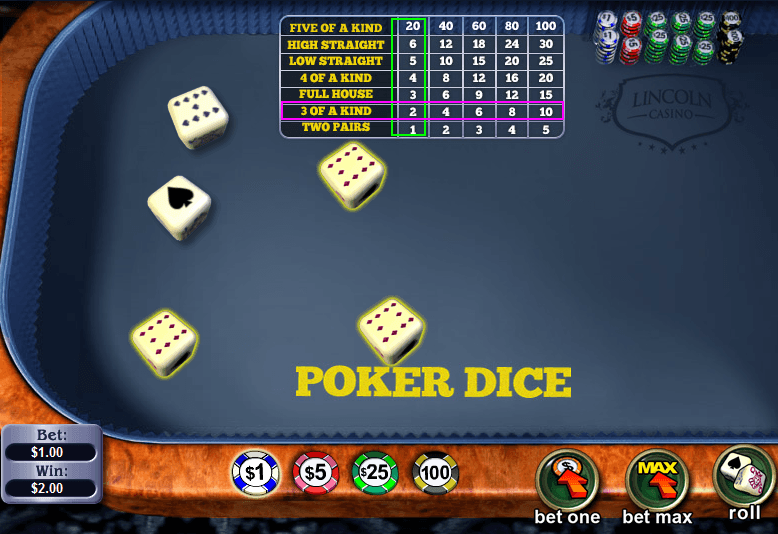

It can be rather stressful to have to calculate the odds for each round especially since rolling dice involves mostly luck than strategy. Fortunately, you can find a table of median rolls on this link (game). Strategizing in a game of Mexico can be very technical and involves having to calculate the odds of the results. Although, nothing will still beat physically rolling actual dice, as it makes the game much more fun and exciting. There are also various mobile applications downloadable via the Google Play store and Apple App Store that allow you to use digital dice in lieu of actual dice. You can set the number of sides, the number of dice to roll, and the number of rolls on the site. offers a venue for players to roll digital dice. Just set up the rules of the game yourself. There is no actual digital version of the dice game Mexico online or on mobile platforms that I’m aware of but there are digital versions of dice that you can use for playing Mexico. The best way to play Mexico is live with friends sitting around a table with a pair of dice. In some versions, if two players get rolls that are equally low, both lose a life each and if several players roll a Mexico, the loser loses two lives. This should be determined before the game starts so that the rules are clear. if two players roll a 2-1 in one round, the stakes are tripled and so on). If more than one player rolls a Mexico in one round, it is up to the group to decide whether they would want to add another unit to the stakes to match the number of players who manages to roll a Mexico (i.e. This means that whoever loses the round will have to double the amount of money he puts in the pot for that round. If money is involved in the game, every time a player in one round rolls a Mexico, the stakes are doubled. Therefore, a player who manages to roll a 2-1 still has a high chance of winning the round even if he does not assume the role of lead roller. If a player manages to roll a 2-1 but the lead roller fails to do so, the roll is not considered a Mexico but the scoring remains the same.

In the off chance that the next player also rolls a Mexico, the turn is passed on to the next player and so on. This is because the lead roller is automatically out of danger because his last roll was already a Mexico and is the highest possible score in that round. In effect, the second player becomes the first player by default and is allowed to determine how many rolls the subsequent players can take. In the event that the lead roller manages to roll a 2-1, the turn is passed unto the next player even if the lead roller still has rolls left. A 2-1 roll or twenty-one is the highest possible roll in the game and is called “Mexico”. The highest roll a player can get is a 2-1, which is higher than any double or mixed roll. A double, therefore, ranks higher than a mixed roll even if its face value is lower. 6-6, 5-5, 4-4), the player is given a higher score. This rule applies to all number combinations provided that it is a mixed roll (i.e. This is because the higher value is designated the tens column spot and the lower value is designated the ones column spot. For example, a player rolls 3 and 6, the score that player receives is 63. However, the face value is not used but rather, the two values are combined to create a two-digit number. The values of the two dice are combined to determine the score. It is worth noting, however, that only the last roll counts as a turn. Whoever takes the lead spot gets the privilege of rolling the dice up to three times, which then determines how many times the next players are allowed to roll. When a player no longer has lives or no longer has money left to add to the pot, he or she is eliminated from the game. The losing player in the last round gets to take the first turn on the next round, regardless of whether he or she rolled last. The lowest roller must put a portion of his money in the pot. Each player starts with a certain amount of money, which is then split into the number of rounds. In a game of Mexico where money is involved, the amount is agreed on beforehand. Every time a player loses a round, the die is rotated to the next lower number to show how many lives he or she has left. The lowest roller loses the round and therefore, loses a life. At the beginning of the game, the die is placed with the “6” symbol facing up. The die marks the number of lives the player has in every turn. In a regular game of Mexico where money is not involved, every player is given an extra die (apart from the two dice used for rolling).


 0 kommentar(er)
0 kommentar(er)
